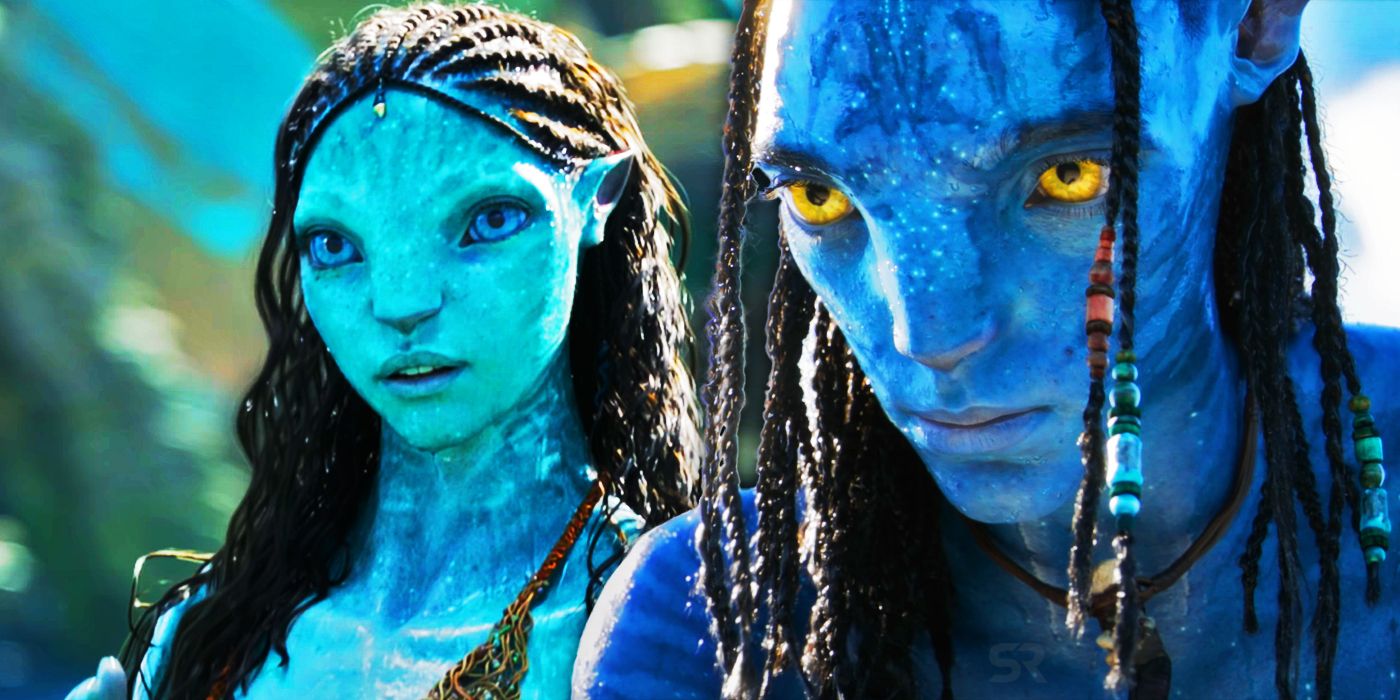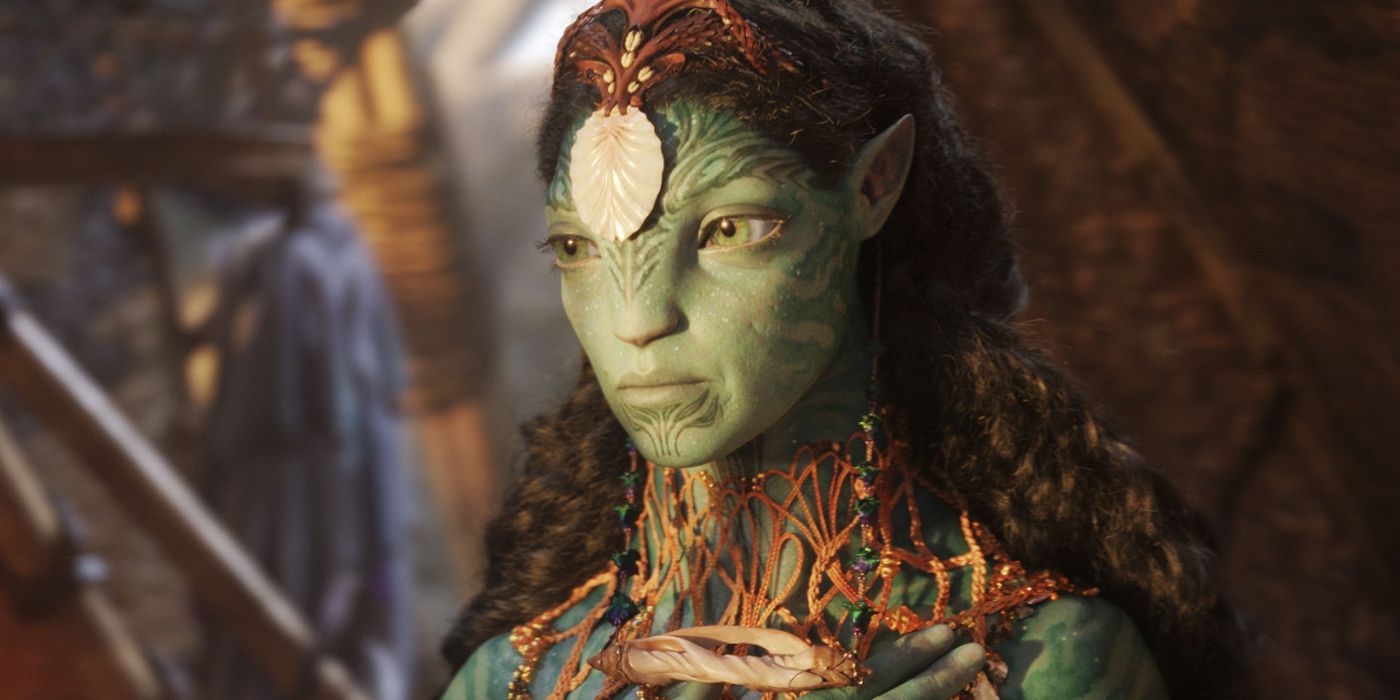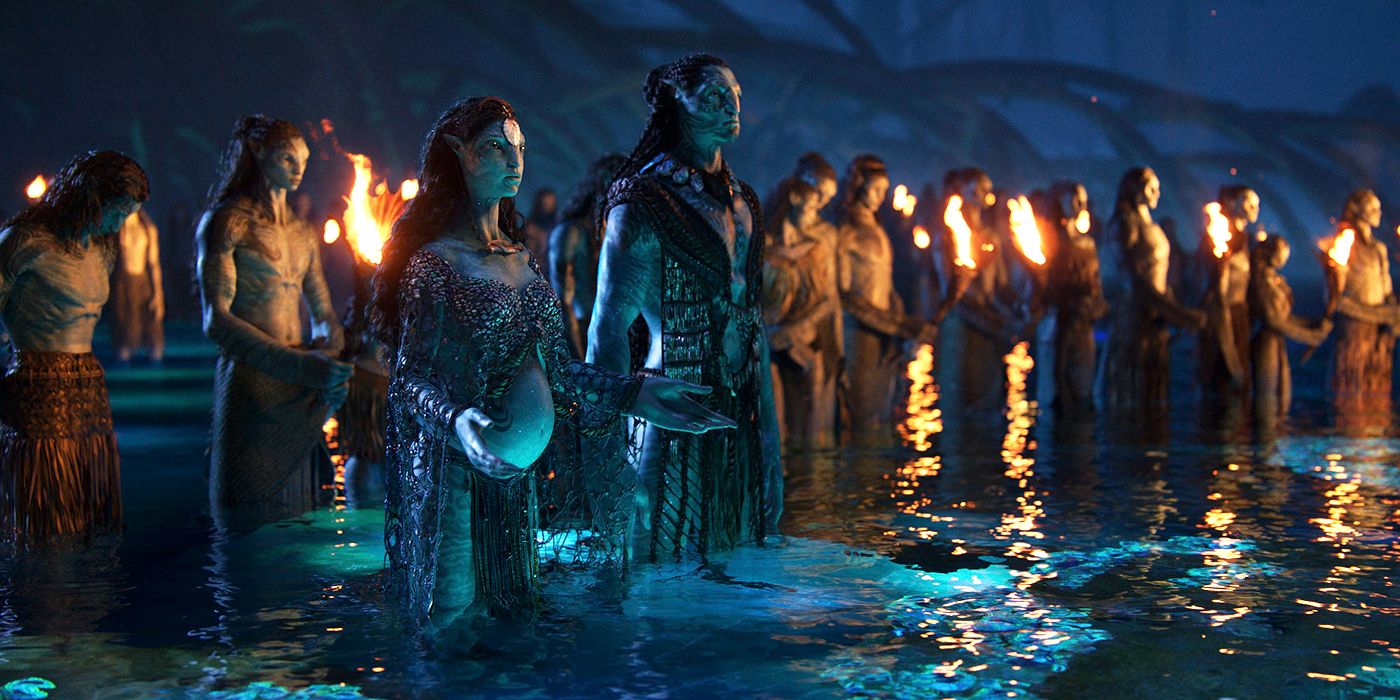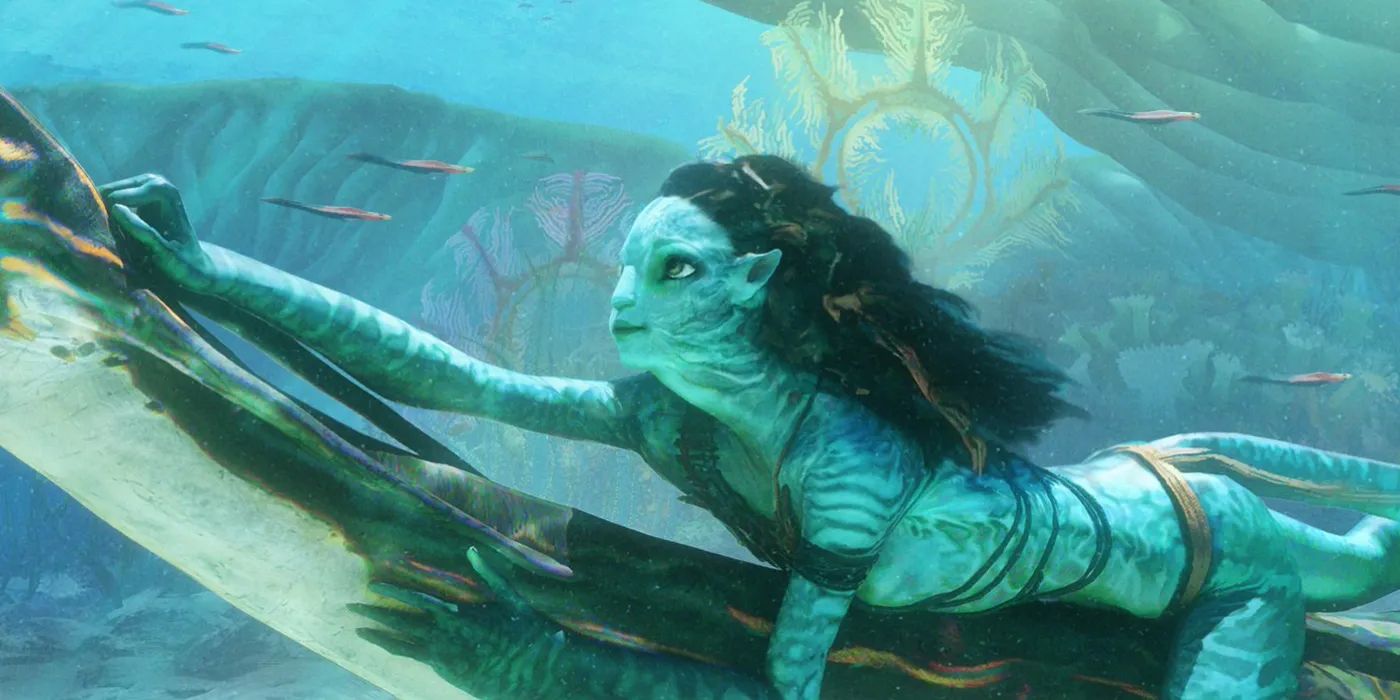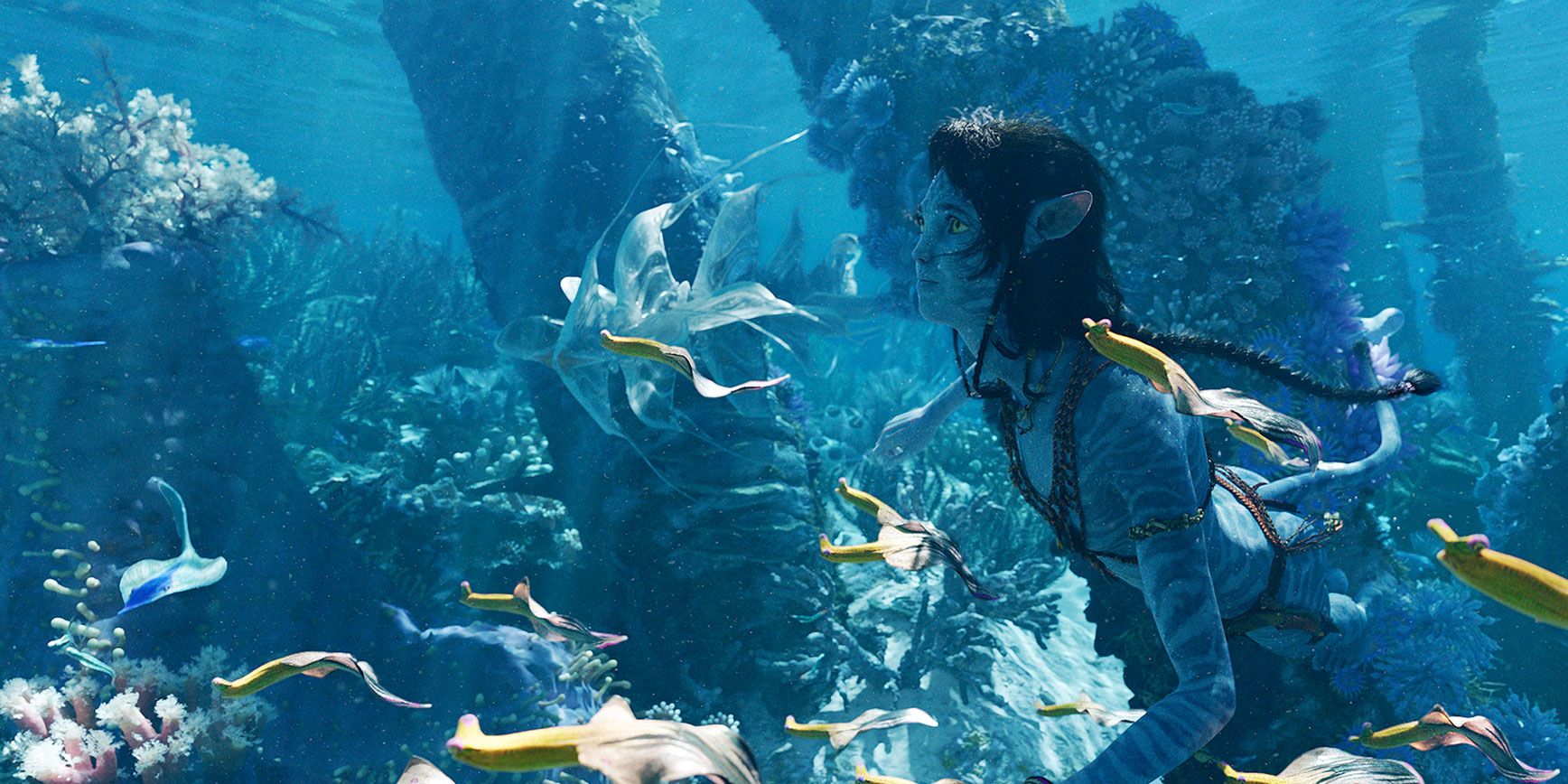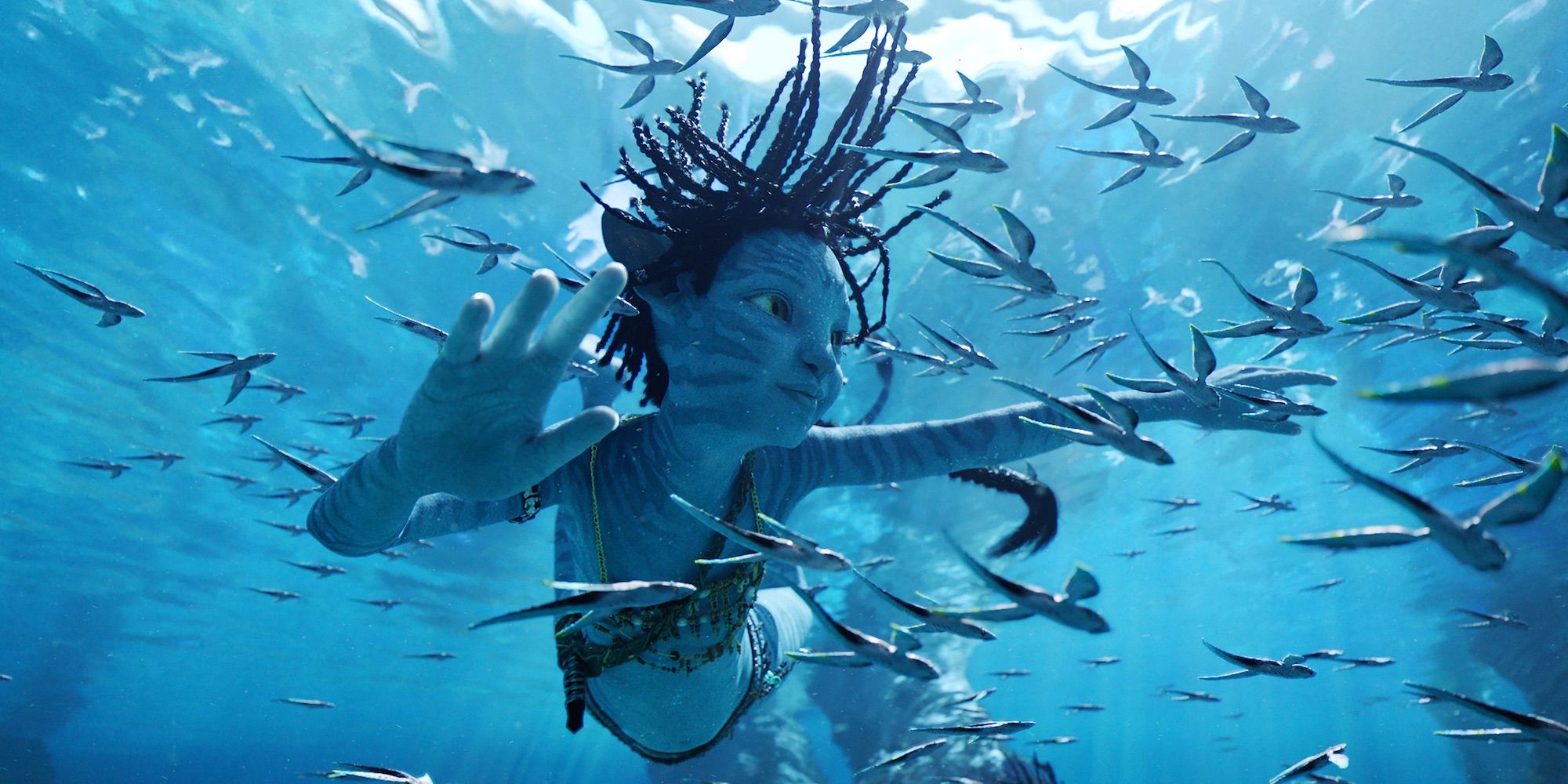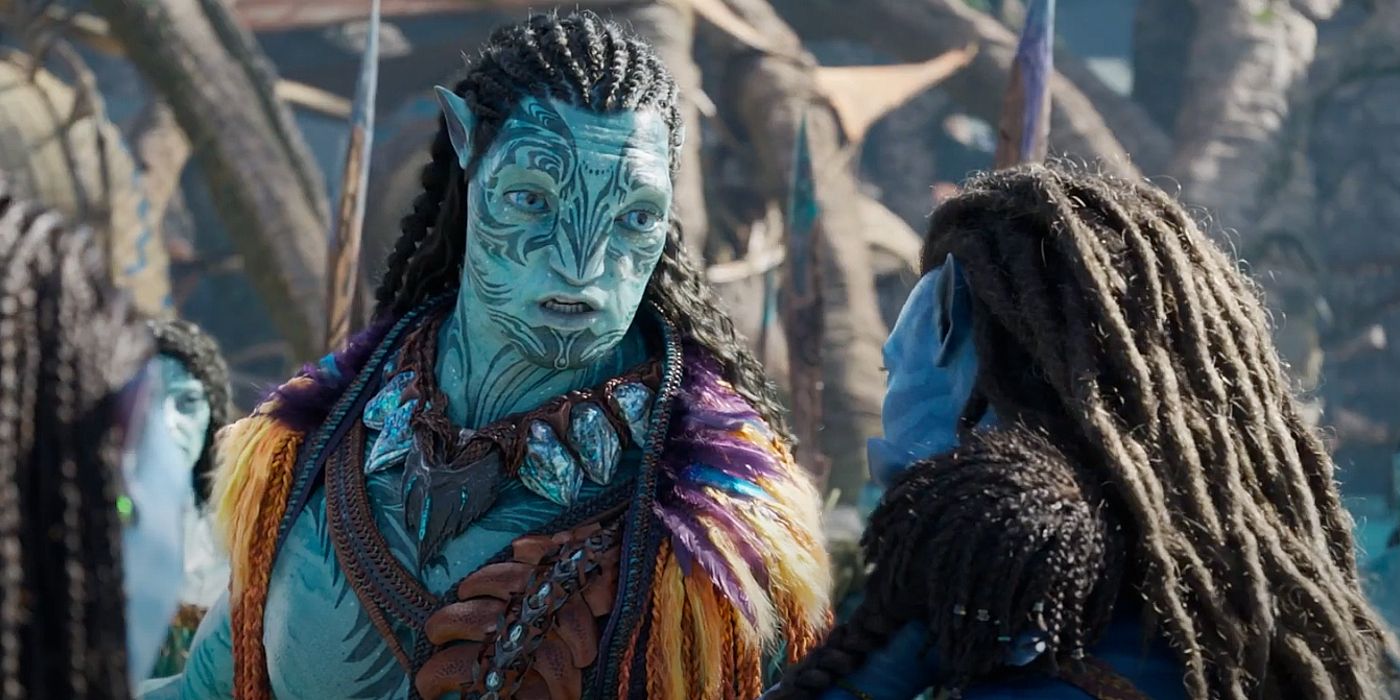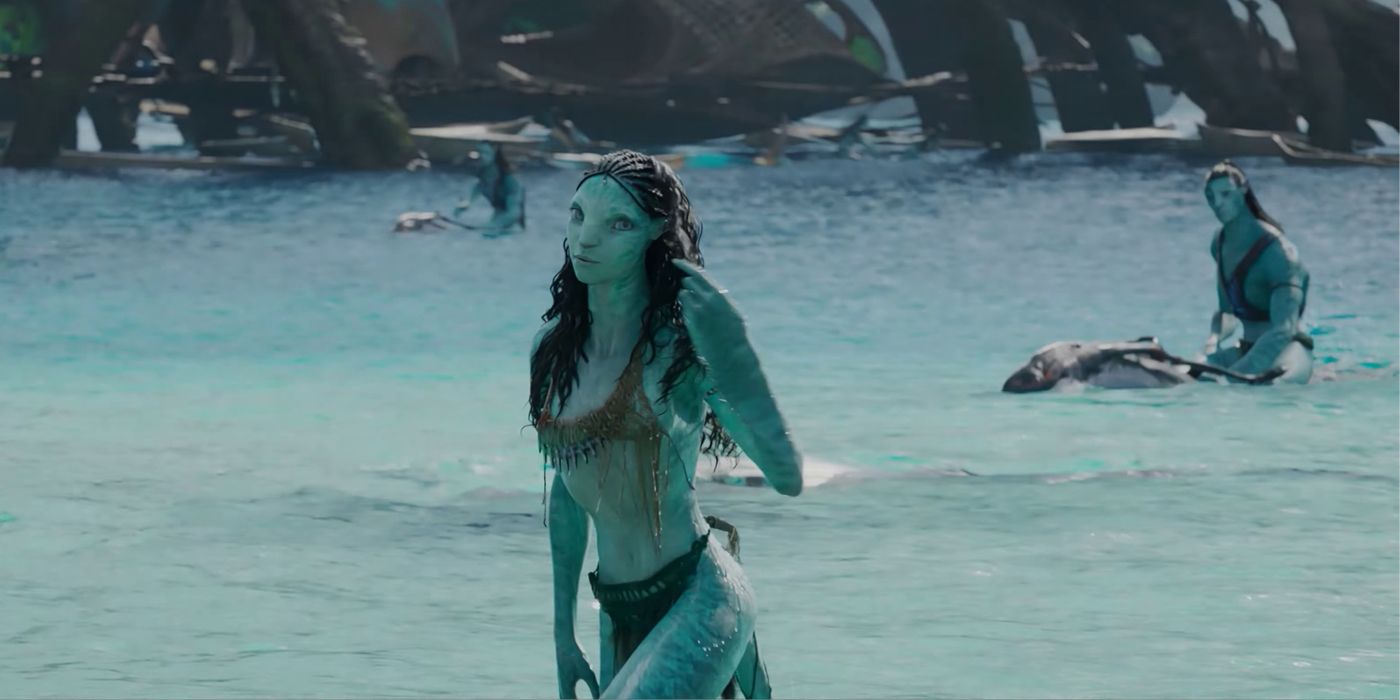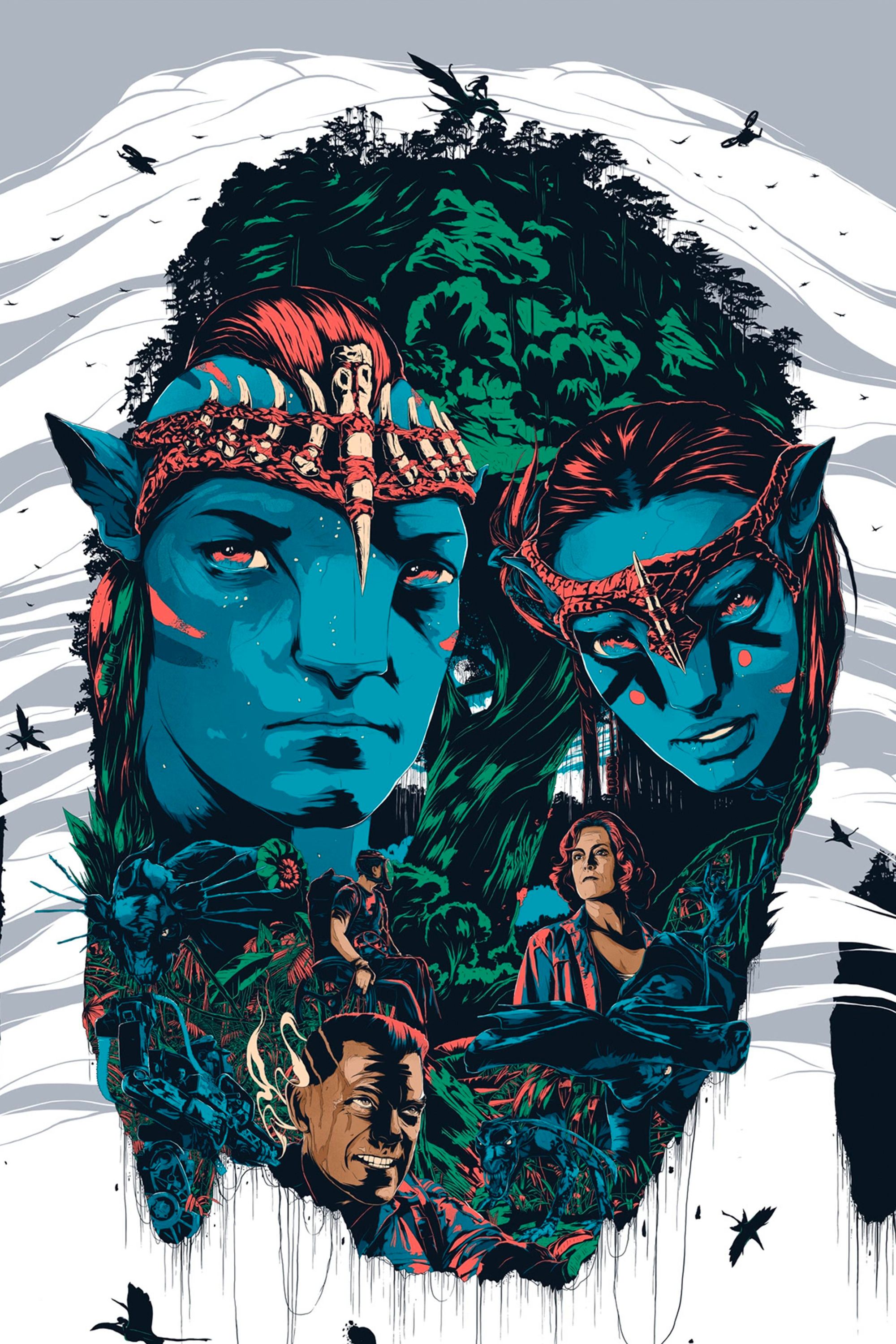Avatar: The Way of Water introduced an all-new clan of Na'vi known as the Metkayina — and there are a lot of differences between these oceanic Na'vi and Avatar's tree-dwelling Omatikaya. These water-based Na'vi live in a completely different environment from the Omitakaya, the Na'vi clan to which Jake, Neytiri, and their children belong. This means that the Metkayina have to survive against all kinds of water-based threats and wildlife on the dangerous planet of Avatar's Pandora. While they may seem pretty similar at first glance, there are a lot of biological differences between the Metkayina and the Omitakaya in Avatar: The Way of Water.
Avatar: The Way of Water follows Jake Sully and his family as they flee their home in order to evade the returning RDA soldiers, including the reincarnated Avatar of Colonel Quaritch. The small group of Omatikaya travel eastward, where they run into the Metkayina clan, a group of Na'vi that have based their society around Pandora's vast oceans. Although the Omatikaya initially clash with the Metkayina, Jake Sully and his family eventually learn to live in harmony with the sea-dwelling Na'vi, figuring out how to live alongside the new clan, despite their many cultural and biological differences.
Green Skin
The most apparent difference in the Metkayina Na'vi is their teal-green skin. While the Omatikaya are known for their vibrant blue skin, the Metkayina's green skin allows them to survive much better in their environment. Essentially, their teal-green skin shade allows them to perfectly blend in with the greenish-blueish oceans of Pandora, giving them the ability to hide from predators while swimming.
Besides the biological reason, there's also a practical reason why Avatar: The Way of Water changed the Metkayina's skin color. Having green skin allows the audience to visually tell which Na'vi is part of which clan, as the skin color is much more instantly recognizable than the other differences between the clans. Comparatively, the Omitakaya are fish out of water among the Metkayina, and having different colors allows the film to visually make this distinction.
Finned Arms
Another major difference that the Metkayina Na'vi have are their thick, finned arms. The Metkayina's broad forearms act almost as paddles, allowing them to swim through Pandora's oceans with great force. Their arms also allow the Metkayina to hit harder while simultaneously being big enough to use defensively, blocking incoming hits. Throughout Avatar: The Way of Water, the Metkayina make fun of Jake and Neytiri's kids, with their comparatively thin arms being the butt of many jokes.
Bigger Tails
Along with their arms, the Metkayina also have much bigger tails than the Omatikaya. While the Omitakaya have thin, prehensile tails (meaning tails that are capable of grasping things), Avatar's Metkayina have thick and flat tails. In the water, the Omatikaya use their tales like rudders, giving them better steering ability in the water. The tails can also be used in combat, with Avatar: The Way of Water showing the Metkayina using their tails to sweep the legs of other Na'vi and hit them with their powerful swings at a distance.
Transparent Eyelids
Perhaps the most subtle difference between the Metkayina and the Omitakya is the Metkayina's eyelids. Although they have regular eyelids, the Metkayina also have a second set of eyelids underneath their main ones. These eyelids are translucent, allowing the Metkayina to see underwater without damaging their eyes. The Metkayina's translucent eyelids in Avatar 2 are actually a real thing present in many marine animals, such as mackerel, milkfish, and jacks. Known as adipose eyelids, this small detail probably went unnoticed by many, making it another example of the meticulous world-building of Avatar: The Way of Water.
Looser Hair
One of the most distinctive qualities of the Na'vi is their hair, with the Omatikaya typically wearing their thick hair in long, black braids. Although the Metkayina all have black hair as well, their hair is much less thick than their tree-dwelling counterparts. Because of this, the Metkayina wear their hair in different hairstyles, preferring looser hairstyles that allow their hair to flow. The different hairstyles present in the Metkayina clan is another example of the many cultural differences between Pandora's various Na'vi clans, adding another layer of detail to the world of Avatar.
The Metkayina's loose hair also has a survival advantage for the clan. In the water, the Metkayina's hair poofs out, showing off the fantastic water and hair physics of the new Avatar film. It also makes the Metkayina look bigger, possibly warding off the predators of Pandora's ocean. Many real-life animals instinctively poof their hair out to seem bigger to predators, and it only makes sense that the Na'vi would have evolved this survival instinct as well.
Smaller Ears
Another minor difference between the Omatikaya and the Metkayina are the Metkayina's smaller ears. When compared to Jake Sully and his family, the Metkayina's ears seem much smaller, with their ears also featuring much smaller ear canals. Although it isn't certain exactly why the Metkayina have this difference, it is most likely an adaptation that allows the Na'vi to take in less water through their ears while swimming. On top of that, the Metkayina probably need to hear less than the Omatikaya. While the Omatikaya have to hear predators over the constant crunching of leaves, the Metkayina live on fairly flat beaches, making their hearing less crucial.
Bigger Chests & Skinnier Abdomens
One final difference between the two clans of Na'vi is that the Metkayina have different chest and abdomen proportions. In Avatar: The Way of Water, the Metkayina on average seem to have broader chests, while also having skinnier abdomens. Since the Metkayina can't breathe water, this adaptation most likely came about as a result of their need to stay underwater for long periods of time. By the end of Avatar: The Way of Water, the Omatikaya Na'vi have been in several situations where they have nearly run out of breath - something that the Metkayina are never shown struggling with.
It is theorized that the Metkayina's bigger chests allow them to have more room for larger lungs. This ability for increased lung capacity explains why they can stay underwater for so long without coming up for air. Their skinnier abdomens could mean that the rest of their organs are smaller, allowing the Metkayina to be about the same size as the other Na'vi while still making them suitable for their environments. Small details like this are why the world of Pandora in Avatar: The Way of Water is such a beloved and complex place.
Avatar 3 Will Introduce New Na'vi Cultures
Comparing the Metkayina vs Omaticaya in Avatar 2 reveals a lot, but that is just the beginning of the clans of Pandora. It has been confirmed that Avatar 3 will introduce new Na'vi cultures much different from the ones audiences have already been introduced to. In fact, producer Jon Landau has hinted that each new Avatar movie will add to the cultures of the ones before it, "Each movie, we introduce new biomes and new cultures. And because we're introducing new cultures, we have new characters." Landau also explained that these new cultures wouldn't replace others but rather build on the world.
Landau revealed that Avatar 3 would feature at least two new Na'vi cultures in its story. One of these cultures is known to be the so-called Ash People in Avatar 3. While the Na'vi have been shown in a positive light up until this point in the franchise, this new tribe will subvert that with a more ruthless and violent tribe. This hints that the new tribes to be introduced will continue to have huge impacts on the franchise's story beyond Avatar: The Way of Water.

